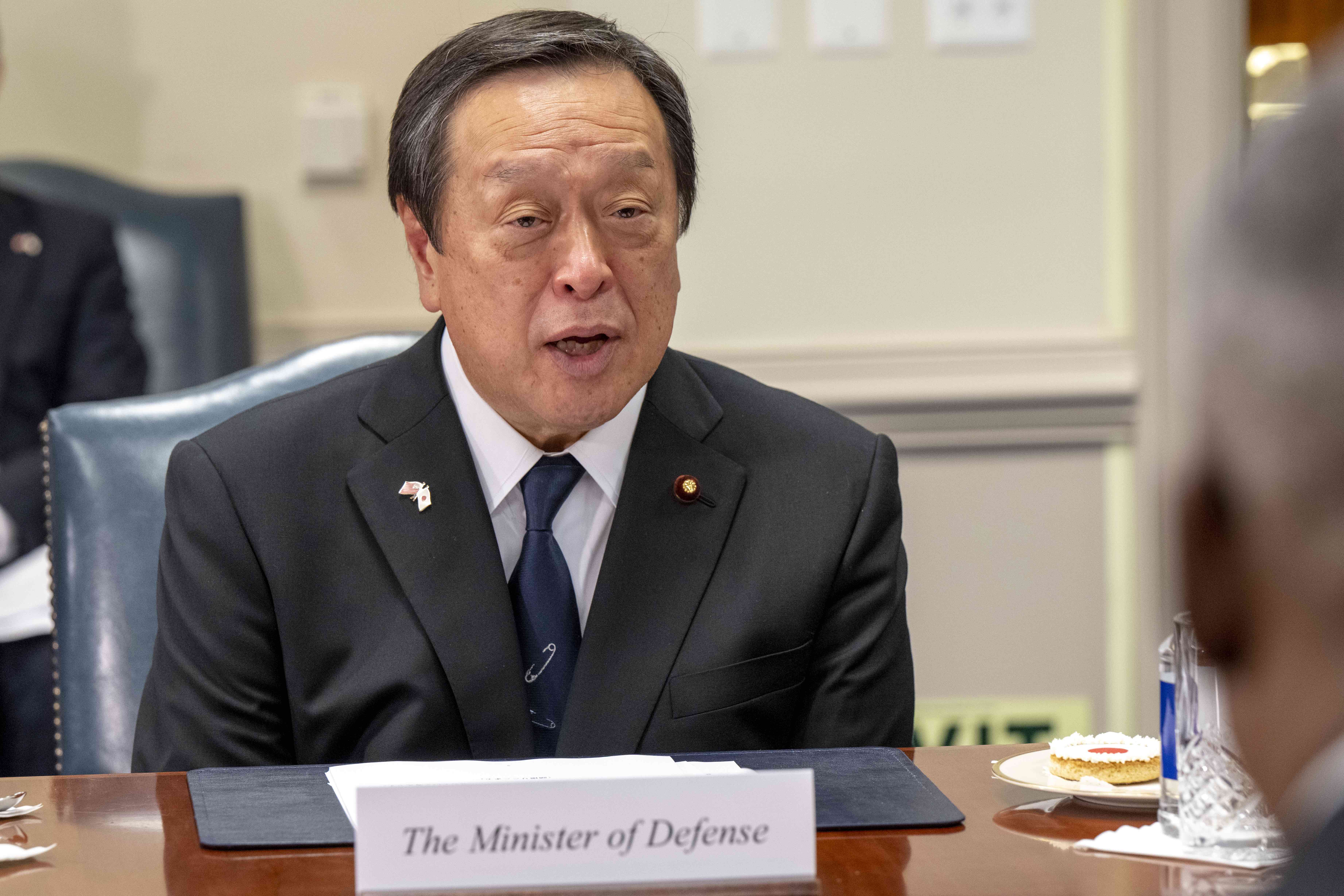
The Japanese have had their own instances of unidentified flying objects and surveillance balloons sighted over the country in the past few years, Japan’s Defense Minister Yasukazu Hamada said Friday.
Japan saw flying objects in June 2020 and September 2021, Hamada said during a press conference at the Ministry of Defense. He added that in January 2022, a similar balloon was sighted over the high seas west of Kyushu by a patrol aircraft conducting surveillance in the area.
Hamada declined to give more details on specific instances, saying that disclosure of such infromation would reveal Japan’s intelligence gathering capabilities.
Though Hamada did not state the locations, in June 2020 in Sendai and in September 2021 in Hachinohe, both on the main island of Honshu, unidentified objects had been sighted in both areas, which host a number of Japanese military bases.
The Japanese defense chief also said that Japan worked closely with the U.S. and partner nation in sharing information in regard to the situation around Japan, including on balloon flights and added to the media that it was not possible, owing to the nature of the matter, for his Ministry to disclose as to whether such information sharing was carried out in specific instances and as to the whether the information shared confirmed that the balloons sighted around Japan originated from China.
Earlier in a Tuesday press conference, Hamada said under both international law and Japanese laws, an unauthorized entry by a foreign balloon into Japanese airspace would be considered a violation of Japan’s airspace and aircraft of the Japan Self Defense Forces (JSDF) would be able to use weapons in such situations under Article 84 of the Self Defense Forces Law.
“As a general rule, appropriate measures will be taken when deemed necessary to protect the lives and properties of the people” he said.
Hamada’s confirmation of suspicious balloon overflights of Japan, follows Saturday shoot down of a Chinese surveillance balloon off the coast of South Carolina by a U.S. F-22 Raptor and the ongoing recovery efforts by the U.S. Navy. Officials in Beijing have said the aircraft was a civilian weather balloon that was blown off course.
Meanwhile on Tuesday, Naval Air Systems Command that said the U.S. Navy, in partnership with Japan Maritime Self-Defense Force (JMSDF) representatives, awarded an $8.6 million foreign military sale in December 2022 to Raytheon Intelligence & Space for the procurement and delivery of a Joint Precision Approach and Landing System (JPALS) unit for installation on JMSDF destroyer helicopter carrier JS Izumo (DDH-183).
JPALS enables aircraft to approach and land on ships at sea while operating in all-weather conditions and is integrated on the F-35B Lighting II Joint Strike Fighter according to the release. The system is currently being deployed on all U.S. Navy aircraft carriers and amphibious assault ships along with the Royal Navy’s HMS Queen Elizabeth (R08) and the Italian Navy’s ITS Cavour (550). JPALS is deploy on Izumo in 2024. Izumo in 2021 completed its first stage of modification to operate F-35s and is scheduled to go into the dock in 2025 for the second phase of its modification. Its sister ship JS Kaga (DDH-184) is currently undergoing first phase modification that is expected to be completed in March this year.
On Wednesday Japan’s Ministry of Defense announced that a Royal Australian Air Force (RAAF) Poseidon P-8A will be stationed in Japan at Kadena Air Base, Okinawa from early February to late March to conduct surveillance and monitoring operations in support of United Nations sanctions on North Korea. The announcement noted that this is the 11th time since 2018 that the air surveillance mission has been carried out by Australia.

Over in the South China Sea, both the Nimitz Carrier Strike Group (CSG) and the Makin Island Amphibious Ready Group (ARG) are separately conducting routine operations there though the official social media pages of both groups have been posting a series of infographics of their composition and cross-tagging each other in the posts over the week, a likely indication that the CSG and ARG will link up together for a combined exercise soon or are already doing so given the current practices of delayed media releases on activities. The Nimitz CSG consists of carrier USS Nimitz (CVN-68) with embarked Carrier Air Wing (CVW) 17, cruiser USS Bunker Hill (CG-52) and destroyers USS Wayne E. Meyer (DDG-108), USS Chung-Hoon (DDG-93), USS Decatur (DDG-73) and USS Paul Hamilton (DDG-60). The Nimitz CSG deployed from the West Coast on Dec. 3 and chopped into U.S. 7th Fleet on Dec. 16. The Makin Island ARG consist of amphibious assault ship USS Makin Island (LHD-8) and amphibious transport docks USS John P. Murtha (LPD-26) and USS Anchorage (LPD-23) along with the embarked 13th Marine Expeditionary Unit (MEU). The ARG left the West Coast on Nov. 9 for a deployment to the Indo-Pacific.
Meanwhile, littoral combat ship USS Charleston (LCS-18) carried out tactical exercises with JMSDF destroyer JS Makinami (DD-112) in the South China Sea on Sunday. Makinami is in transit to the Gulf of Aden as the 44th Deployed Surface Force for Counter-Piracy Enforcement (DSPE), Japan’s ongoing rotational deployment since 2009 of a destroyer to the region for counter-piracy missions.





